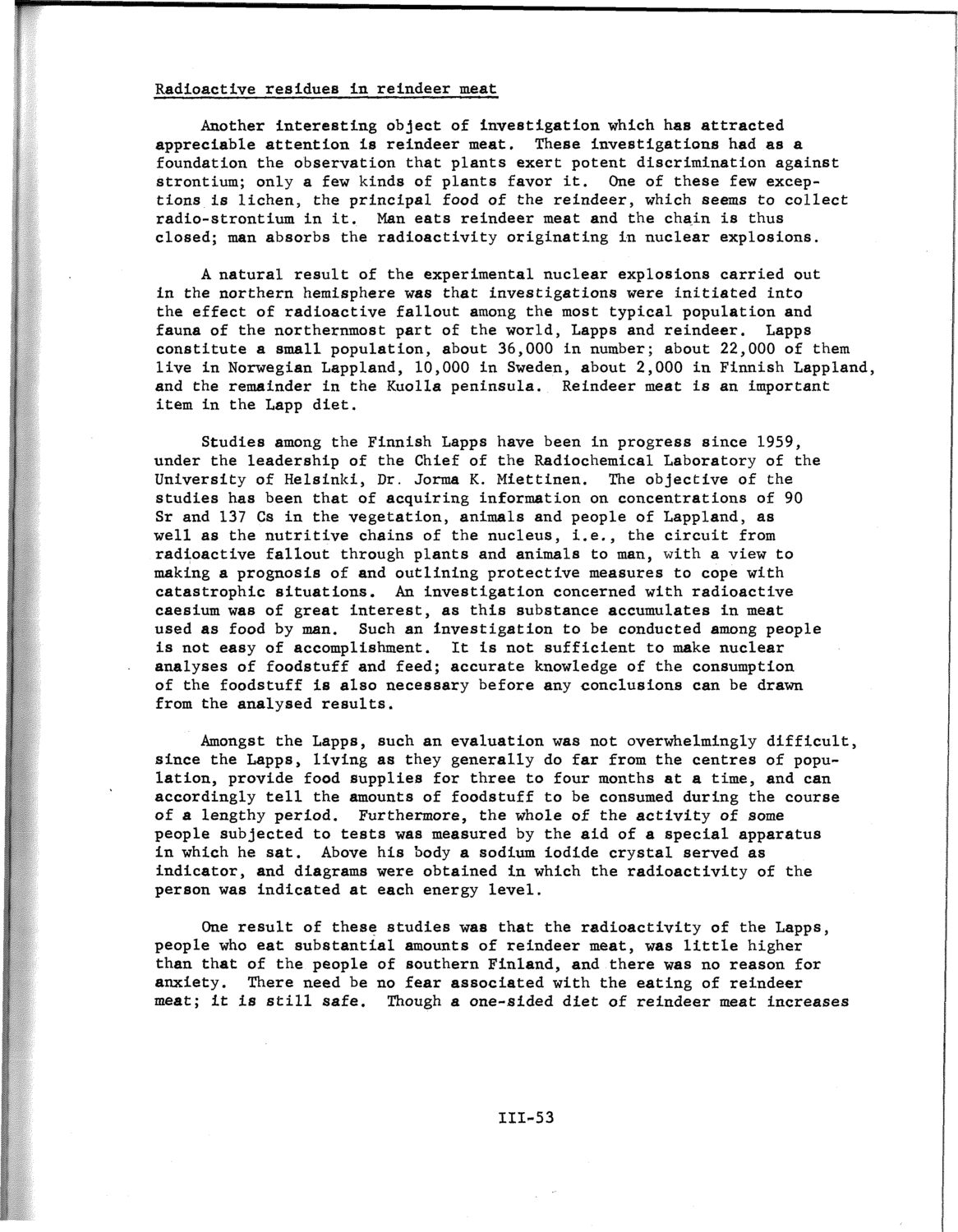| |
| |
Caption: SWE - Proceedings of the First International Conference of Women Engineers and Scientists
This is a reduced-resolution page image for fast online browsing.

EXTRACTED TEXT FROM PAGE:
Radioactive residues in reindeer meat Another interesting object of investigation which has attracted appreciable attention is reindeer meat. These investigations had as a foundation the observation that plants exert potent discrimination against strontium; only a few kinds of plants favor it. One of these few exceptions is lichen, the principal food of the reindeer, which seems to collect radio-strontium in it. Man eats reindeer meat and the chain is thus closed; man absorbs the radioactivity originating in nuclear explosions. A natural result of the experimental nuclear explosions carried out in the northern hemisphere was that investigations were initiated into the effect of radioactive fallout among the most typical population and fauna of the northernmost part of the world, Lapps and reindeer. Lapps constitute a small population, about 36,000 in number; about 22,000 of them live in Norwegian Lappland, 10,000 in Sweden, about 2,000 in Finnish Lappland, and the remainder in the Kuolla peninsula. Reindeer meat is an important item in the Lapp diet. Studies among the Finnish Lapps have been in progress since 1959, under the leadership of the Chief of the Radiochemical Laboratory of the University of Helsinki, Dr. Jorma K. Miettinen. The objective of the studies has been that of acquiring information on concentrations of 90 Sr and 137 Cs in the vegetation, animals and people of Lappland, as well as the nutritive chains of the nucleus, i.e., the circuit from radioactive fallout through plants and animals to man, with a view to making a prognosis of and outlining protective measures to cope with catastrophic situations. An investigation concerned with radioactive caesium was of great interest, as this substance accumulates in meat used as food by man. Such an investigation to be conducted among people is not easy of accomplishment. It is not sufficient to make nuclear analyses of foodstuff and feed; accurate knowledge of the consumption of the foodstuff is also necessary before any conclusions can be drawn from the analysed results. Amongst the Lapps, such an evaluation was not overwhelmingly difficult, since the Lapps, living as they generally do far from the centres of population, provide food supplies for three to four months at a time, and can accordingly tell the amounts of foodstuff to be consumed during the course of a lengthy period. Furthermore, the whole of the activity of some people subjected to tests was measured by the aid of a special apparatus in which he sat. Above his body a sodium iodide crystal served as indicator, and diagrams were obtained in which the radioactivity of the person was indicated at each energy level. One result of these studies was that the radioactivity of the Lapps, people who eat substantial amounts of reindeer meat, was little higher than that of the people of southern Finland, and there was no reason for anxiety. There need be no fear associated with the eating of reindeer meat; it is still safe. Though a one-sided diet of reindeer meat increases 111-53
| |